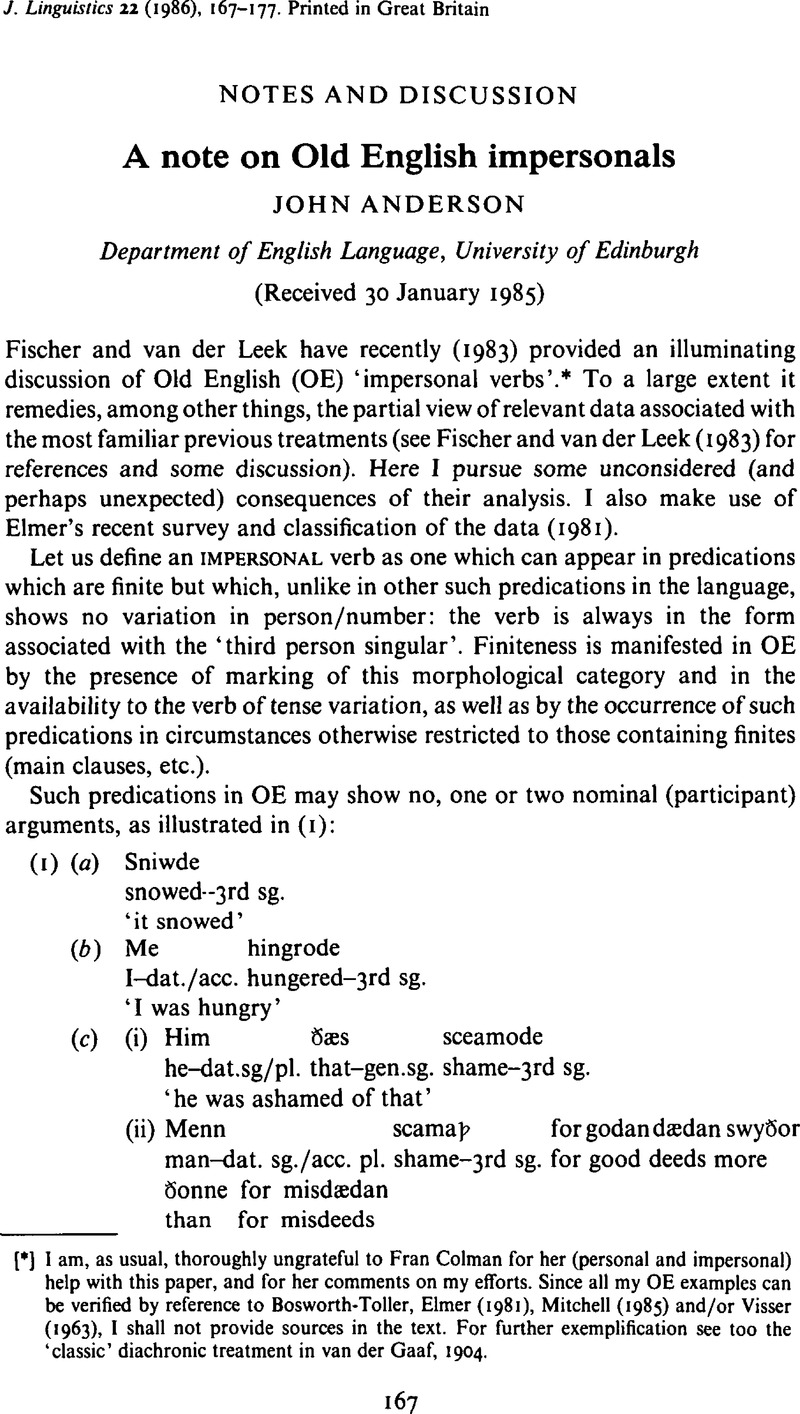Crossref Citations
This article has been cited by the following publications. This list is generated based on data provided by Crossref.
Adams, Valerie
1988.
Old English Syntax. By Bruce Mitchell. Oxford: Clarendon Press. 1985. Two volumes. lxiv + 820,1080.
Journal of English Linguistics,
Vol. 21,
Issue. 1,
p.
88.
Harris, Roy
1989.
Degree-0 explanation.
Behavioral and Brain Sciences,
Vol. 12,
Issue. 2,
p.
344.
Koster, Jan
1989.
Does Universal Grammar exist?.
Behavioral and Brain Sciences,
Vol. 12,
Issue. 2,
p.
347.
McCawley, James D.
1989.
INFL', Spec, and other fabulous beasts.
Behavioral and Brain Sciences,
Vol. 12,
Issue. 2,
p.
350.
Wasow, Thomas
1989.
Why degree-0?.
Behavioral and Brain Sciences,
Vol. 12,
Issue. 2,
p.
361.
DENISON, DAVID
1989.
AUXILIARY + IMPERSONAL IN OLD ENGLISH.
Folia Linguistica Historica,
Vol. 22,
Issue. Historica vol. 9,1,
Grodzinsky, Yosef
1989.
The language learner: A trigger-happy kid?.
Behavioral and Brain Sciences,
Vol. 12,
Issue. 2,
p.
342.
O'Grady, William
1989.
Two perspectives on learnability.
Behavioral and Brain Sciences,
Vol. 12,
Issue. 2,
p.
354.
Schlesinger, I. M.
1989.
Language acquisition: Dubious assumptions and a specious explanatory principle.
Behavioral and Brain Sciences,
Vol. 12,
Issue. 2,
p.
355.
Lorch, Marjorie Perlman
1989.
The true nature of the linguistic trigger.
Behavioral and Brain Sciences,
Vol. 12,
Issue. 2,
p.
350.
Vincent, Nigel
1989.
Observing obsolescence.
Behavioral and Brain Sciences,
Vol. 12,
Issue. 2,
p.
360.
Lasnik, Howard
1989.
The nature of triggering data.
Behavioral and Brain Sciences,
Vol. 12,
Issue. 2,
p.
349.
Kroch, Anthony
1989.
Language learning and language change.
Behavioral and Brain Sciences,
Vol. 12,
Issue. 2,
p.
348.
Buckingham, Hugh W.
1989.
On triggers.
Behavioral and Brain Sciences,
Vol. 12,
Issue. 2,
p.
335.
Lightfoot, David
1989.
Matching parameters to simple triggers.
Behavioral and Brain Sciences,
Vol. 12,
Issue. 2,
p.
364.
Freidin, Robin
and
Quicoli, A. Carlos
1989.
Zero-stimulation for parameter setting.
Behavioral and Brain Sciences,
Vol. 12,
Issue. 2,
p.
338.
Wilkins, Wendy
1989.
Why degree-0?.
Behavioral and Brain Sciences,
Vol. 12,
Issue. 2,
p.
362.
Neale, Stephen
1989.
Ononeas an anaphor.
Behavioral and Brain Sciences,
Vol. 12,
Issue. 2,
p.
353.
Baker, C. L.
1989.
Some observations on degree of learnability.
Behavioral and Brain Sciences,
Vol. 12,
Issue. 2,
p.
334.
Cinque, Guglielmo
1989.
Parameter setting in “instantaneous” and real-time acquisition.
Behavioral and Brain Sciences,
Vol. 12,
Issue. 2,
p.
336.



